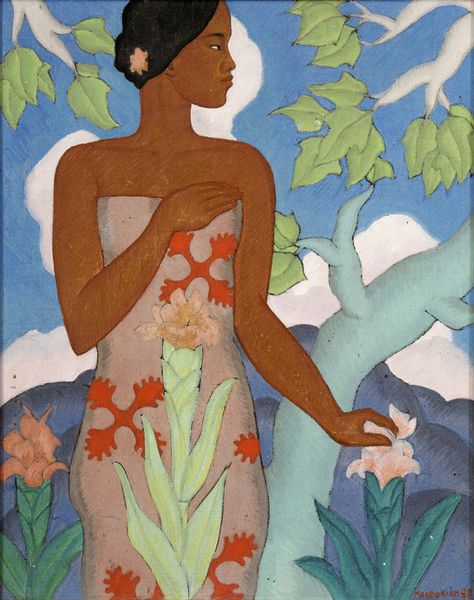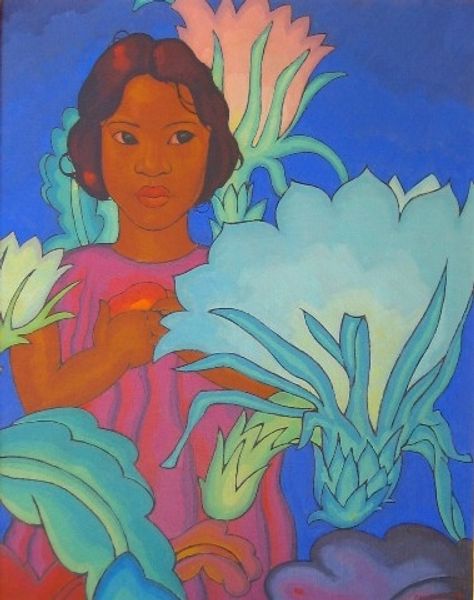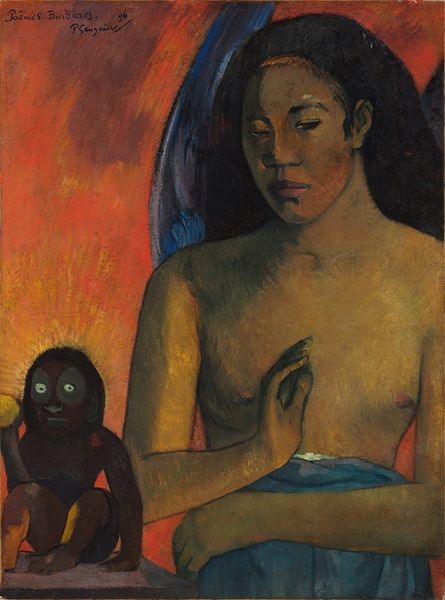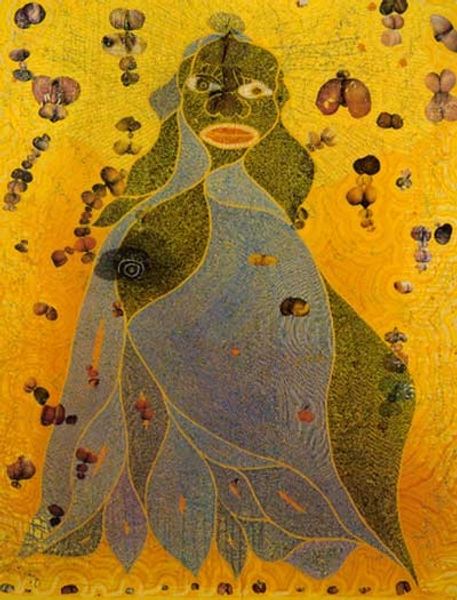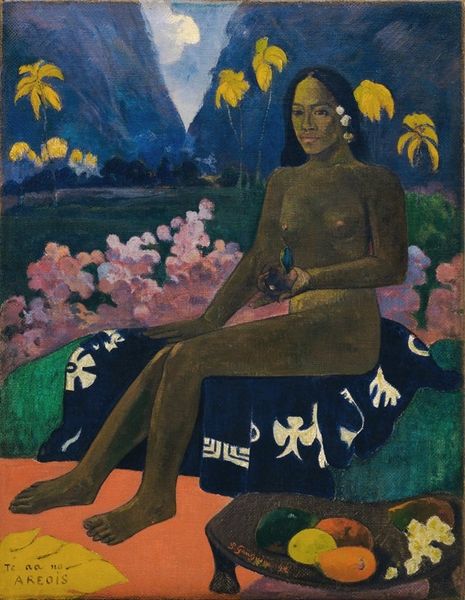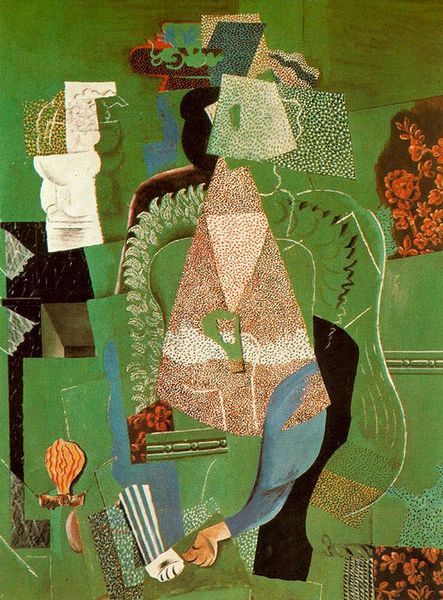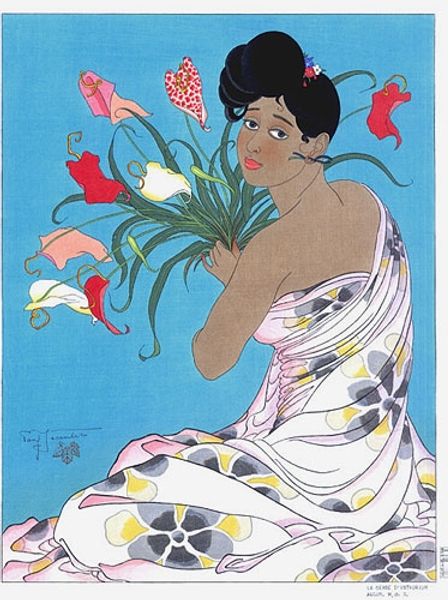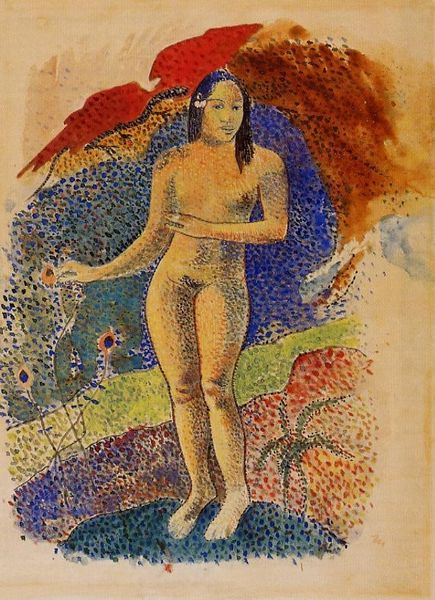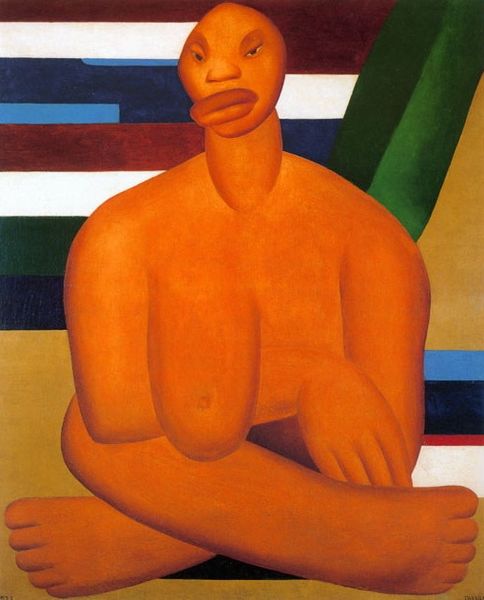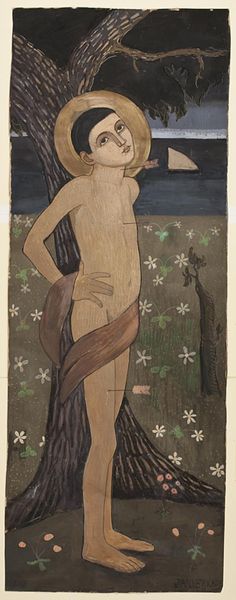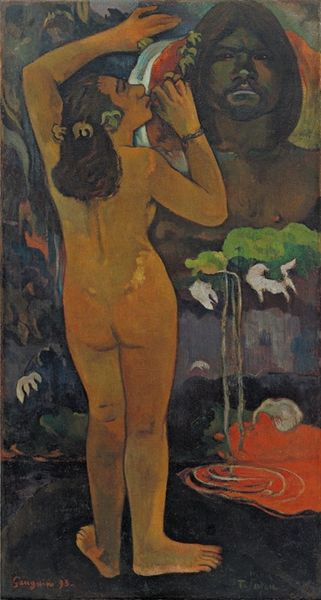
#
portrait
#
caricature
#
acrylic on canvas
#
naive art
#
watercolour illustration
Copyright: Public domain
Arman Manookian painted "Polynesian Woman and Tiki" in Hawaii in the late 1920s, a time of increasing tourism and cultural exchange. The painting presents a local woman alongside a traditional Tiki statue, surrounded by lush foliage. Manookian's work is interesting because it brings together elements of both Polynesian culture and Western artistic styles. The Tiki, a symbol of ancestral power, is juxtaposed with the woman's contemplative pose, possibly reflecting the complex relationship between tradition and modernity in Hawaii at the time. The soft color palette and flattened perspective also reflect the influence of European modernism. Understanding this painting requires us to consider its historical context. Examining tourist ephemera from this time, like travel brochures, reveals how Hawaiian culture was marketed to outsiders, sometimes reinforcing stereotypes. Manookian's image invites us to reflect on how local identity is shaped by both internal traditions and external perceptions.
Comments
No comments
Be the first to comment and join the conversation on the ultimate creative platform.
